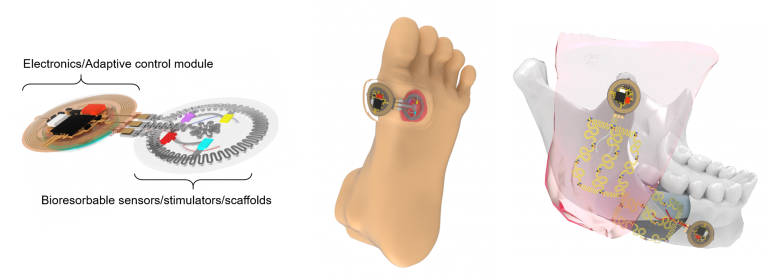1.Bioelectronics
The seamless integration of microsystems technology with living organisms inpsires promising routes to the creation of powerful tools in biomedical research and exciting possibilities in clinical medicine. By thinking beyond traditional inception of electronics and photonics, we are exploring novel approaches to address unmet clinical needs. Those efforts are towards: i) designing biosensing systems, with advanced wearability or implantability, that can offer diagnostic insights in a timely and precise fashion. ii) designing intelligent systems that can ensure clinically safe and dynamically precise delivery of molecular and cellular tools to the targeted tissues and cell types.


2.Neural interface
Profound unknowns about neural network and brain development embed enormous opportunities in developing technologies that treat brain disorders and enhance brain potential. However, to develop tools that can unveil those unknowns, the challenges reside mostly on the strong materials mismatch at the neural interface. This research theme focuses on fundamental study of charge and photon transports at the biotic-abiotic interface and developing devices that can advance neurotechnology.

3. 3D multiscale electronic platform
Making integrated microsystems three-dimensional not only releases an additional degree of spatial freedom in fabrication to increase a device’s performance but also allows a more-intimate interface with biological systems, soft robotics, and other spatially irregular systems. However, although traditional fabrication techniques realize design and assembly in three dimensions, the 3D dynamic/bioinspired transformation of flexible micro-/nanosystems at multiscale still remains challenging. This research theme aims to develop organic–inorganic and/or biotic–abiotic 3D hybrid micro-/nanosystems, with potential applications in biomedical devices and soft robotics.


